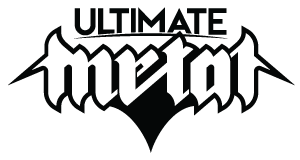I'd forgotten about this thread. Okay, let's take a look at the circuits...
Values and placement of some of the components is very different and ALL the pots on this are linear taper.
All the pots in the Smash Drive circuit are marked "B" (= linear) also, so I guess your prototype is showing its roots.

According to Mnorbye's layout, Distortus Maximus uses all log pots for the tonestack, but the actual values are
exactly the same as in the Smash Drive tonestack, and the topology (standard Marshall-style) is identical. So changing a linear to a logarithmic pot just changes what position the knobs need to be in to get a particular respones - the range of possible responses remains the same.
Mr Krank has kept the gain-setting 100 ohm resistor and it's DC-blocking capacitor (these components are not seen in the LM386 datasheet circuits, but the possibility of reducing the gain in this manner is mentioned without specific values in the application notes). In Distortus Maximus these are
exactly the same values as in the Smash Drive.
Mr Krank has, however, removed the gain pot (i.e. it's just like the Smash Drive with the gain turned right down) and used a volume pot to control the level going into the LM386 instead (preceeded by a series resistor, so some attenuation is always present) - this (very standard) type of volume control requires a log pot.
This change in the way gain is applied should make some difference to the distortion character, with more clipping at the input-stage for a given amount of output-stage clipping.
He's also added a small capacitor in shunt before the LM386 input, to roll off the high-frequency response, a significant difference in tone. Although I note that the turnover frequency will vary a bit depending on the position of the gain knob. Pre-distortion LPF has had some very salutary results for me, so this is a cool tweak IMHO.
The front-end uses exactly the same resistor components as the Screaming Bird, except for the addition of a large-value input resistor (a no-brainer if you plan to plug a guitar into it

). The cap values determining the exact turnover frequency of the high-pass filtering have been changed.
Edit: A different transistor has been used. One small-signal NPN behaves the same as another in this circuit so you could bung in any type you have knocking around. It's arbitrary.
This tells me that there was some experimentation and thought put into the design of this pedal, not just pasting two existing designs together.
In sum, a different (more standard type) gain control, HPF cap values tweaked, and a pre-distortion LPF implemented. None of these adaptations are rocket science and taking Screaming Bird -> Smash Drive as a starting point (how else to explain the uncannily identical values of most of the components) the circuit could be worked up over a wet weekend.
I've drawn the circuits up as schematics for comparison:
YouSendIt download, you can see where the differences are. And aren't.
While I'm not dissing the pedal itself (I've not tried it), disparity between cost of manufacture and retail price can IME only be accounted for by either R&D which looks to have been pretty minimal, or bare-faced avarice.
But I'm sure he's a great guy if you meet him socially.


